Padua Walking Tour: Top Attractions
Are you ready to take an unforgettable journey through an engaging Padua walking tour?A visit to Padua is a fully fascinating experience that you can’t miss. There is an Italian popular saying: “Venice is beautiful, Padua is her sister”. The comparison with Venice should suggest you what you will find once there.
Padua, with its cobbled streets, is a pleasure to explore, and during your Padua walking tour, you will delight in the many restaurants, cafes and bars that abound, as well as the glorious piazzas and quaint old buildings.
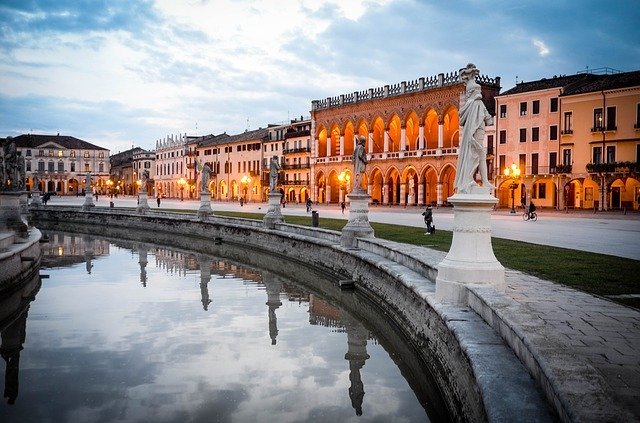 From its Roman beginnings, it was one of Italy’s wealthiest cities, and in the 14th century, it drew some of Italy’s finest artists: Giotto, Giovanni, Donatello, Paolo Uccello, and others who left to the city a largesse of artworks.
From its Roman beginnings, it was one of Italy’s wealthiest cities, and in the 14th century, it drew some of Italy’s finest artists: Giotto, Giovanni, Donatello, Paolo Uccello, and others who left to the city a largesse of artworks.
The Scrovegni Chapel by Giotto, the most important series of paintings in the world, would be enough to justify a visit to Padua.
Padua has an intense medieval vibe all around. No matter if you’re walking around the old town or visiting one of the churches or following the street art of Kenny Random, you will feel like you have arrived in a different world.
Moreover, since 1222 it has been home to the prestigious university which quickly became one of the most important centres of learning in Europe, both in literature and science (witness Galileo). All this history and art will give you plenty of things to do and see in this charming city.
Here you can find a list of the best 5 things to do during your Padua walking tour.
Discover the Scrovegni Chapel – Giotto’s masterpiece
If you’re arriving in Padua on your day trip, we’d suggest starting your Padua walking tour at what is arguably Padua’s most famous sight, the Scrovegni Chapel. The Scrovegni Chapel is famous for its fresco cycle by Giotto considered one of the most important masterpieces of Western Art. The church was completed in 1305 and is surrounded by a Roman amphitheatre.
When you enter the church you instantly get a unique feeling that was unexpected based on the first impression. Practically every available wall space is packed full with various religious depictions and display a burst of colour.
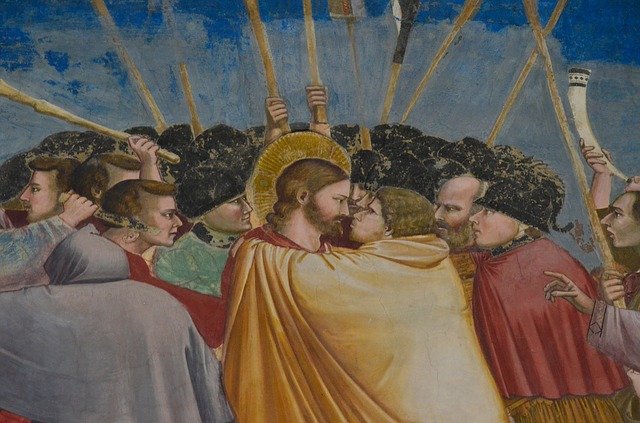
Split into several different sections, the frescos represent general stories from the bible, the life of Christ, and the vices and virtues of man. Considered a true masterpiece, the detail and colour still present today is fantastic and this is one piece of Paduan art you cannot miss out on.
Unfortunately, the frescoes began to deteriorate years ago, so systems of regulation were put into place to monitor the temperature and pollution levels to prevent the further degradation of the art. For this reason, visits to the chapel are strictly scheduled. It’s recommended that you arrive 45 minutes before your visit.
You will be invited into an antechamber to view a 15-minute long video about the history of the chapel, and then allowed into the chapel itself for a further 15 minutes. Photography is strictly forbidden inside the chapel.
The Scrovegni Chapel is located in the northern part of the old town of Padua, in the area of the Giardini dell’Arena (gardens) that are a pleasant place to explore and relax. We advised to combine a visit to the Scrovegni Chapel and the Civici Museums together with a gentle stroll through the park and along the banks of the northern canal.
The grounds of the park are beautiful with many shaded areas covered by luscious trees and plants, furthermore, there are several footpaths that wind through the grounds to create a pleasant walking trail. Admission ticket € 14
Explore the Palace of the Reason – a magnificent palace
The Palazzo della Ragione, in Italian, is a wondrous place, a great testament to what the human spirit and the human hand can achieve. If you ever find yourself in Padua, put a visit to it at the top on your list.
This immense medieval town hall sits in the centre of the Piazza della Erbe and is considered an icon of the city and this is absolutely a must during your Padua walking tour. It is enormous in size and unusual in shape, striking you, when you first catch a glimpse of it, with its huge roof which looks just like the upturned hull of a boat.

It is reported to have the largest unsupported roof in Europe and it boasts the past power and influence that Padua had.
Created between 1172 and 1219, the town hall has stood for hundreds of years and has been a central point for various civic ceremonies and legal courts. The name “Ragione” (Reason) derives from the fact that right and wrong was established here. It was the site of the city’s law courts.
On the inside the Great Hall is covered in splendid centuries-old frescoes and depict various allegorical stories and historical events.
On the outside it is flanked on both sides by columned loggias.
They look over the adjacent squares where market stalls are erected each morning and where, in the early evening people flock to enjoy an aperitivo and a friendly get-together in one of the many cafes which set up their tables straight on the pavement.
And then, right under the loggias there is the ground floor of the Palazzo della Ragione. There underneath high vaulted ceilings nestle butchers, cheesemongers, cute little delis, bakeries, and traditional Italian bars. Admission ticket € 7
Visit the Basilica of St. Anthony – one of the largest churches in the world
Topped by soaring domes and spires, the Basilica of St. Anthony of Padua is the most important church in the city and is visited by pilgrims from across the globe. With its mix of Romanesque, Byzantine, and Gothic architecture, and rounded domes reminiscent of St. Mark’s Basilica in nearby Venice, this church is one of Padua’s top attractions during your Padua walking tour.
Originally constructed in the 1200’s, the basilica features a myriad of different architectural styles and is listed as one of the international shrines of the Holy See. For the billions of people in the world who feel Catholic, Padua is a name that refers most of all to the Franciscan preacher who, born in Lisbon in 1195, became soon extremely popular as Anthony of Padua.
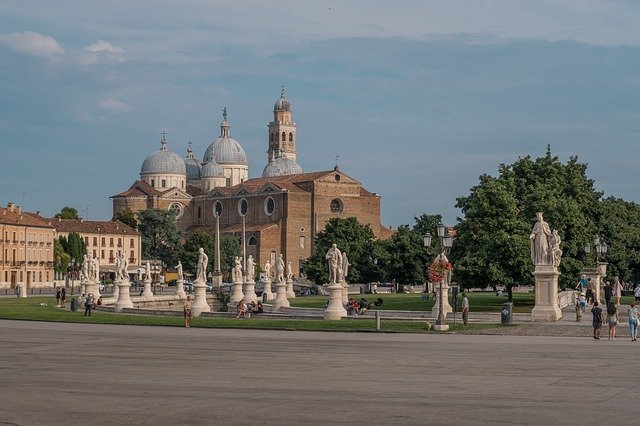
This church is a symbol of hope for all believers. The Basilica is full of people coming from all over the world to ask for a pardon for their loved ones. It is very touching to see, around the tomb of the saint, many photos of people healed, and the messages expressing gratitude.
For anyone who is not a believer, it is interesting to peek inside this “out of real the world” place and admire some of his treasures (especially the bronze works by Donatello).
Pay attention to the dress code! You cannot enter the Basilica with clothing seen as inappropriate by the friars, so no shorts, no sleeveless tops or necklines. They do not provide with shawls at the entrance and if you are not dressed appropriately you could be asked to leave.
Explore the Botanical Garden – the oldest university botanical garden
Near Prato della Valle, but also close to the Basilica of St. Anthony, you can explore Europe’s oldest botanical garden. It was established in 1545 by Venetian governors. Despite the venerable age, it is managed in very modern, scientific and environmentally friendly ways.
It is a UNESCO World Heritage Site. The Orto Botanico of Padua is the reason why all the other botanical gardens in the world were born. Founded as a medicinal vegetable garden in the city in 1545, it soon became famous worldwide, thanks to its collection of rare flowers and plants and for its beautiful settings.
Beautiful, lush, full of incredibly rare vegetation, a garden of simple medicinal plants, born to enclose exotic and rare plants with special therapeutic qualities. Thanks to the adventurous travels of the prefects, but also to the commercial relations of Venice, that went as far as the Far East, the Orto Botanico di Padova was the first receptacle of rare and exotic plants.
Thus, they appeared in Padua, for the first time in the Old Continent: the sunflower, the potato, the sesame, the agave, the lilac, the freesia and many others.
Today, It is a futuristic structure that houses more than 1,300 species of plants from all over the world, which thrive despite the enormous differences in climate on the planet.
There are 5 botanical areas to choose from, in practice 5 different thematic areas, which divide the plants according to their habitats and provenance. The Botanical Garden is a nice hidden corner of town where you can take a refreshing walk under the shade of the trees especially in warm summer days.
The place is dotted with benches where you can pause to admire the plants. Admission ticket: € 10
Admire Prato della Valle square -one of the most unique squares in Italy
Take a breather from your Padua walking tour and watch the world go by at Prato della Valle, a 90,000 square meter elliptical square, the largest such public space in Italy and one of the biggest in Europe.
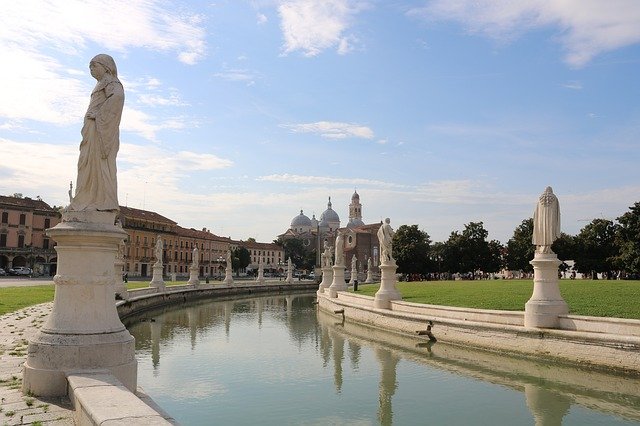
This is one of the most important areas of Padua and the locals simply love the open space,the design of the square or simply chat under the shade.
At the centre of the square, there is a grassy park surrounded by a water ring dotted with 78 statues of famous citizens, which makes it truly unique. The sight of the statues reflected in the canal lit by the moonlight is one of the most beautiful sights of Padua.
From the square you get a nice view of the precious Basilica of Santa Guistina, and it’s a very romantic place, where it’s worth spending some time when you visit Padua.
On Saturdays there is a huge market that occupies almost the entire square and in June there is lots of activity at the annual theme park on the Prato della Valle.
 Padua Travel Tips:Things to know before you go!
Padua Travel Tips:Things to know before you go!
- The most important advice is to book in advance for the Scrovegni Chapel (which is combined with the Civic Museums). Tours are often fully-booked, so to avoid disappointment book at least a day or two in advance.
- Spend some time at the famous Padovan markets hosted on the three central squares of the city: Piazza dei Signori, Piazza delle Erbe and Piazza dei Frutti. Smell and taste Italy!
- Padua also has several central canals and rivers that provide fantastic walking opportunities and are a great way to see the city. Starting at the Via Goito, you can follow a footpath down the length of the river and admire the beautiful water scenery until you reach the Museo dell Astronomico. During your walk, you will pass many beautiful buildings and see the fantastic natural landscape that the river provides.
- If you are looking for a fine restaurant that boast high quality food, excellent service and a beautiful location, the Trattoria al Prato is the perfect choice.
- Visit the University of Padova, which dates back to 1222, you’ll see the first permanent anatomical theatre, as well as the classroom where Galileo Galilei lectured.
- Caffè Pedrocchi:After your Padua walking tour, I think you deserve a coffee, so stop off at the elegant Caffè Pedrocchi, one of the most famous and important historical cafés in Europe. If it’s a cold day, why not take shelter in one of their highly decorated rooms to order their signature drink – a Café Pedrocchi – a piping hot espresso topped with cool mint cream. Or have a refreshing cold drink under its portico in summer. Absolutely delicious!
- Due to the fantastic transport links between Padua and Venice, it would be a shame not to make the most of your trip to northern Italy and visit the floating city too. Trains travel between Padua and Venice at regular intervals and the journey takes approximately 25-27 minutes.
- If you happen to be in Padua between March and October you should go on a boat trip on the Brenta canal, that’s gonna take you past majestic villas straight to Venice.
 Best time to visit Padua
Best time to visit Padua
The best time to visit Padua in Italy is from April until October, when you will have a pleasant or warm temperature and limited till little rainfall. The highest average temperature in Padua is 29°C in July and the lowest is 6°C in January.
Padua Hotels – Where to Stay
Best luxury hotel: Methis Hotel & SPA 4*
A unique hotel in the heart of Padova
Set on the banks of the Naviglio River, Methis Hotel & SPA is just outside Padua’s historic centre, near Galileo’s Specola Observatory. The rooms are inspired by the four elements – earth, fire, water and air- from the heaviest and most material element, earth, on the first floor, to the most ethereal one, air, on the fourth floor.
Those who choose the suite room will enjoy a beautiful view from the terrace. The spa centre, located on the ground floor, includes a sauna and Turkish bath, as well as relaxation area and sensory showers
Best mid-range hotel: Massimago Wine Tower
A little hidden gem
An authentic tower dating to the 1300s, surrounded by a centuries-old park and the history of the water canals of Padua. A secret oasis of peace, right in the heart of the city. In the three Suites you will enjoy a unique experience, with a little imagination you can join the likes of Galileo Galilei and Giotto.
Best budget hotel: Hotel Casa Del Pellegrino 3*
Excellent location
Casa del Pellegrino Hotel is located in Padua’s old down town, right next to Saint Anthony’s Basilica, in a baroque antique building. The Scrovegni Chapel is a 15-minute walk from the property. Buses to Padua Railway Station stop 50 m away. It offers air-conditioned rooms with free Wi-Fi, a satellite TV and views of the garden or the cathedral.


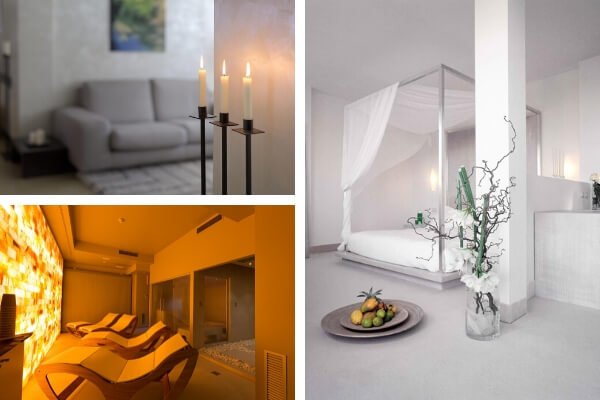

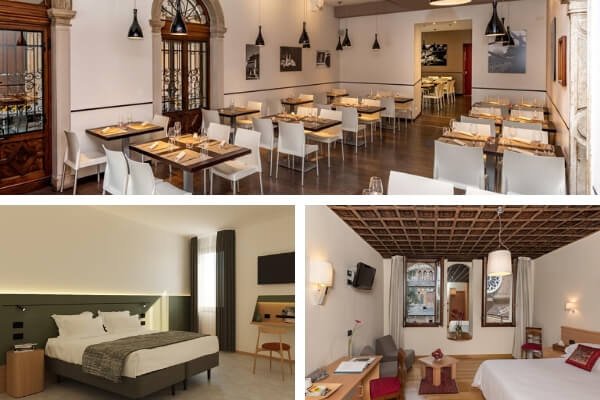

Follow Us